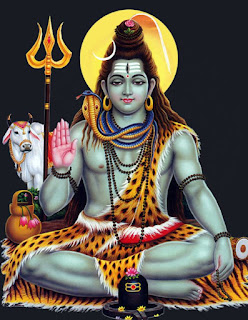Rudrastakam - Shiva Stotrams - Kalasarpa Dosha Nivaran Mantra part-4
Rudrastakam in Telugu:
రుద్రాష్టకం:
 |
| Shiva Stotrams-StotramIndia |
Story behind Rudrastakam:
The Rudrashtakam is a Sanskrit hymn of praise to Shiva, one of the principal deities of Hinduism. The hymn is composed of eight verses, and each verse describes one of Shiva's many attributes. The Rudrashtakam is attributed to the Hindu poet-saint Tulsidas, who lived in the 16th century.
The Rudrashtakam is said to have been composed by Tulsidas when he was imprisoned by the Mughal emperor Akbar. Tulsidas was a devout Vaishnava, and he refused to convert to Islam at Akbar's behest. As a result, he was imprisoned and tortured. In prison, Tulsidas composed the Rudrashtakam as a prayer to Shiva for deliverance.
The Rudrashtakam is a powerful hymn that is said to have the ability to protect the devotee from harm. It is also said to bring peace, prosperity, and spiritual enlightenment. The Rudrashtakam is often chanted as a prayer to Shiva, and it is also used in various rituals and ceremonies.
Here is the story of how the Rudrashtakam came to be composed, as told in the Ramacharitmanas:
When Rama and Lakshmana were searching for Sita, they came to the forest of Dandaka. In this forest, they met the sage Agastya. Agastya told Rama that he needed to worship Shiva in order to defeat Ravana.
Rama and Lakshmana went to the banks of the Ganges River and began to worship Shiva. They chanted the Rudrashtakam for 108 days. On the 108th day, Shiva appeared to Rama and granted him a boon. Rama asked Shiva to help him defeat Ravana. Shiva agreed, and he gave Rama a powerful weapon called the Pashupatastra.
With the help of the Pashupatastra, Rama was able to defeat Ravana and rescue Sita. The Rudrashtakam is said to have played a key role in Rama's victory.
The Rudrashtakam is a powerful hymn that is said to have the ability to protect the devotee from harm. It is also said to bring peace, prosperity, and spiritual enlightenment. The Rudrashtakam is often chanted as a prayer to Shiva, and it is also used in various rituals and ceremonies.
Stotram:
Spiritual Benefits:
- Deepening Devotion: As a hymn praising Shiva and focusing on his attributes, chanting Rudrashtakam can foster a deeper connection with the deity and strengthen an individual's devotional practice.
- Meditation and Self-reflection: The repetitive nature of chanting can induce a meditative state, promoting inner peace and allowing for self-reflection and introspection.
- Connecting with Scriptures: Through chanting, individuals engage with sacred texts and deepen their understanding of Hindu mythology and theology.
Psychological Benefits:
- Stress Reduction: The rhythmic chanting and focus on positive affirmations can induce relaxation and help release stress and anxiety.
- Building Inner Strength: The lyrics praise Shiva's powerful and protective qualities, which can offer some individuals a sense of strength and courage.
- Promoting Positive Qualities: Focusing on Shiva's attributes like compassion, peacefulness, and justice can inspire individuals to cultivate similar qualities in themselves.
Users Also Read:
Comments
Post a Comment